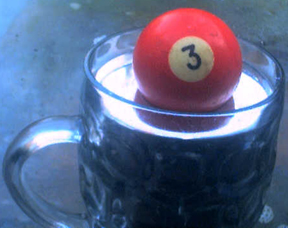This image shows a pool ball floating on liquid mercury. A pool ball is fairly heavy for its size, but you can see it floats on, or is less dense, than liquid mercury.
Click on image for full size
Density Definition Page
Density is a measure of how much mass is contained in a given unit volume (density = mass/volume). It is usually expressed in kg/m^3, so you would say that a cube 2 meters on each side with a mass of 1600 kg has a density of 1600kg/8m^3 (2000 kg/m^3). Put simply, if
mass is a measure of how much ‘stuff’ there is in an object, density is a measure of how tightly that ‘stuff’ is packed together.
One of the ways we can see density illustrated in everyday life is by looking at whether things float or sink in a liquid (water, for example). If an object is less dense than the liquid it is placed in, it will float. If it is more dense, it will sink. This is why an anchor, which is very dense (lots of mass in a relatively small volume) sinks very quickly, while an inner tube (not much mass in a relatively large volume) floats and is very difficult to push underwater.
Some elements are naturally found in very dense forms, and one of the most visually surprising demonstrations of the concept of a less dense object floating on a denser liquid occurs when objects are put in a container of liquid mercury (Hg). This element is a metal that is liquid at room temperature, and it is VERY dense. In fact, it is denser than lead, and metal objects like forks, coins, or even a cannonball will float on top of it!
You might also be interested in:
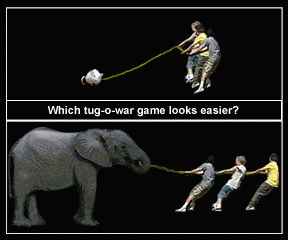
Would it be more difficult to pull an elephant or a mouse? If you pulled each animal with the same amount of force, the elephant would respond less to pulling, even if he didn’t pull back at all. That’s
...more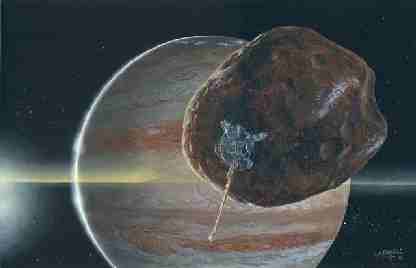
Amalthea , a small moon of Jupiter, is not made of Swiss cheese, but it does seem to be full of holes making its density surprisingly low. Roughly the shape of a potato, Amalthea is a small, reddish moon
...more
The periodic table on the left separates the elements into three groups: the metals (green in the table), nonmetals (orange), and metalloids (blue). Most elements are metals. They are typically shiny,
...more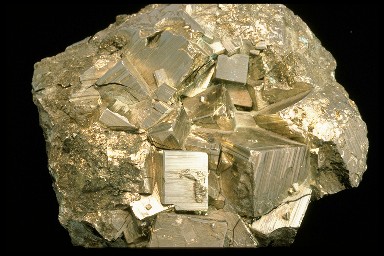
Solid is one of the four common states of matter. The three others are gas, liquid, and plasma. There are also some other exotic states of matter that have been discovered in recent years. Unlike liquids
...more
Earth has a thin atmosphere that sustains life. Fundamental Concept 1.1 Earth's atmosphere is a mixture of gases with small, but important, quantities of liquid and solid particles. Fundamental Concept
...more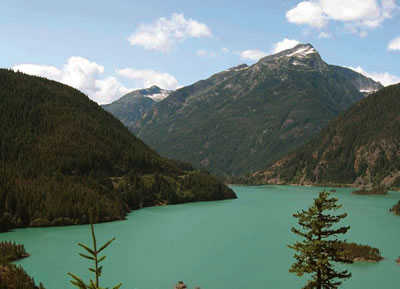
Earth is continuously changing. Big Idea 4.1 Earth’s geosphere changes through geological, hydrological, physical, chemical, and biological processes that are explained by universal laws. These changes
...more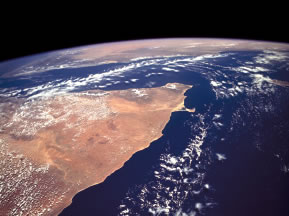
The Earth has one big ocean with many features. Fundamental Concept 1a. The ocean is the dominant physical feature on our planet Earth—covering approximately 70% of the planet’s surface. There is one ocean
...more


